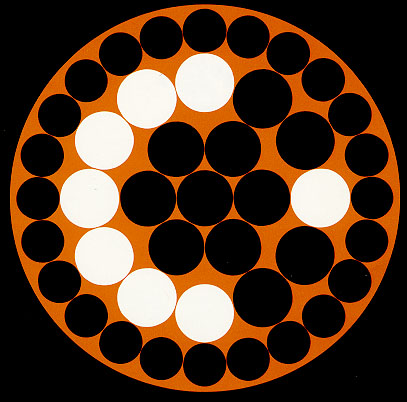allahallahThe unity and singularity of God is perhaps the most important doctrine of Islam. God is the creator of all, and nothing happens but by his will, Islam teaches. People are still held accountable for their actions, but the Qur'an and Hadith reiterate often that all depends on God. The world is thought to be in constant flux, changing as God wills, existing only because of God's will.
allahallahThese beliefs are reflected in the intricate, never-ending patterns of Islamic art. Such patterns can be made to fill any space, no matter how large, yet they are clearly organized elaborations on a single theme, which may be a circle, a flower, or other shape. This mirrors the notion of the world as the patterned expression of God's will.
allahallahMore importantly, Dr. Qureishi points out the emphasis on the type or essence of what is being portrayed. "The artist's mind is not attracted by any particular flower, leaf, or tree. It tries to find the essence of the shapes of flowers, leaves and trees naturalism emphasizes the particular, not the type or the essence." Islamic religious art, as a "bridge between the material and spiritual," has for its subject the basic types or essences of the world and of God's will. Mathematical truths and qualities, particularly in geometry, have always been considered the most "perfect" or most certain of the truths of the world. By arranging abstract types (generalized leaves, flowers, and so on) in strict geometrical patterns, the Islamic artist is inviting meditation on the nature and clarity of God's will.

allahallahIslam is "a rational faith," Dr. Qureishi holds, whose goal is demystification. No spiritual truths are meant to be hidden, and darkness is never a feature of places of worship; the "agencies of semi-darkness and subdued and controlled lights" are never used. Geometric patterns are a wonderful expression of this: since the part is like the whole, there is nothing that will be missed on a wall's decoration, no surprises or drama to be found, only the "rhythmic curve.... [and] an uninhibited joy in light." Islamic religious art offers a visual expression of the rationality and joy Muslims have found in Islamic faith. The traditional trappings of Western art, representation and perspective, are not needed or desired. For the subject is not the particular contingencies of the world, but rather the general types of the universe as expressed by God's will. Perspective is avoided for similar reasons; art that bridges the material and the spiritual has neither human perspective nor that of God; it takes a generalized, more abstract view.
allahallahThis concludes our tour of the connections between Islam and art. Please return home to pick up another thread.